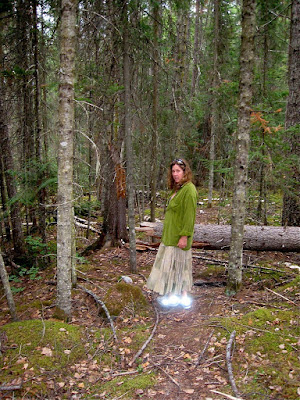Pop-Pop and Nana
After World War Two, he sold the land to William Levitt, who subsequently developed the property as one of his famed Levittowns. These planned communities provided cheap housing for soldiers returning from the war and ultimately helped to redefine the American cultural landscape by introducing an entirely new idea - the suburb.
For his part, my grandfather moved from the countryside to a house in town with a large backyard. He immediately planted a garden, and I always remember leaving his house with bags of veggies. Looking at the old black and white pictures from that time, I'm acutely aware that I'm now older than they were when the photos were taken. Life surely was harder on the physical body back then.
As my grandfather's fecund garden proved, his connection with the earth could not be broken. The plants seemed to know that he loved them and grew in abundance providing enough food not just for the extended family, but enough extra to sell at the local small grocery.
As a child we would visit them every Sunday, and while my parents talked in the parlor, I would run out the back door straight to the garden. My grandfather would take me from one row to the next, explaining all the stages of growth and how to make each plant prosper. Pop-Pop let me help by pulling up weeds or moving renegade vines back to the appropriate pole or fence post. The best part, of course, was the harvest, and each week I'd go home with beans or peas that I had picked myself.
Corn was my favorite, however, and we'd pull the outer shuck and silk down to see if the it was ready. I loved the mixed yellow and white ears that we called butter and cream. Sometimes we would just have a meal of slightly steamed corn with plenty of butter and salt and pepper. My mother knew how to cook it perfectly. In order to retain the nutrients and to accent its sweet taste she would make sure not to overcook it. Here's how she did it:
1) Put about 2-3 inches of water in a big pot along with a little salt.
2) Bring to a rapid boil and throw in the corn.
3) Cover and cook for 3-5 minutes, depending on the number of ears.
The ones in the water will cook more than the ones on top, so experiment to find what's best for you. Just be sure not to leave it in the pot for too long. One great way to use the extra corn, if there is any of course, is to prepare one of my father's favorite dishes- succotash You never hear of it much these days, but sometimes I get a craving for those simpler times. Somehow the taste of fresh lima beans and corn in a milky sauce personifies it all. Gary and I call it eating memories.
Succotash
Ingredients:
2 cups fresh lima beans (about 1 pound)
4 cups fresh corn cut from cob (about 6 ears or use the leftovers)
3 tablespoons butter
1/4 cup milk
1/2 teaspoon salt, or to taste
1/8 teaspoon pepper
Preparation:
Boil lima beans in salted water until almost tender (about 15 min).
Drain beans and add corn, butter, whipping cream, salt, and pepper.
Mix well until butter and whipping cream are evenly distributed.
Cook over low heat, stirring frequently until corn is done (3-7 min) .
If using corn leftovers just add and heat until well-blended and warm. This recipe makes 6 servings. Enjoy!















